[Practical Tips] Plant Care Tips for Planting and Placing in Villas and Highend Clubs
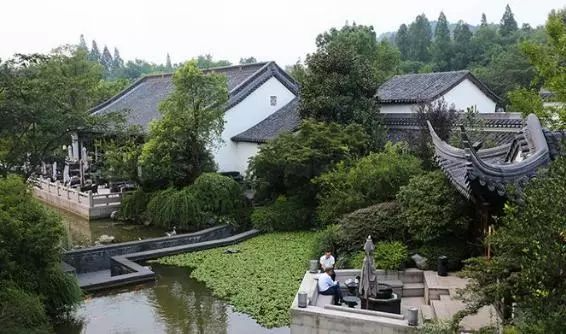
As the temperature rises, everything begins to sprout, and flowers and plants begin a new growing season.
How do you arrange your flowers?
Suitable for planting and placing plants in villas and high-end clubs.
Let's briefly introduce the flower arrangements during this period, both indoors and outdoors...
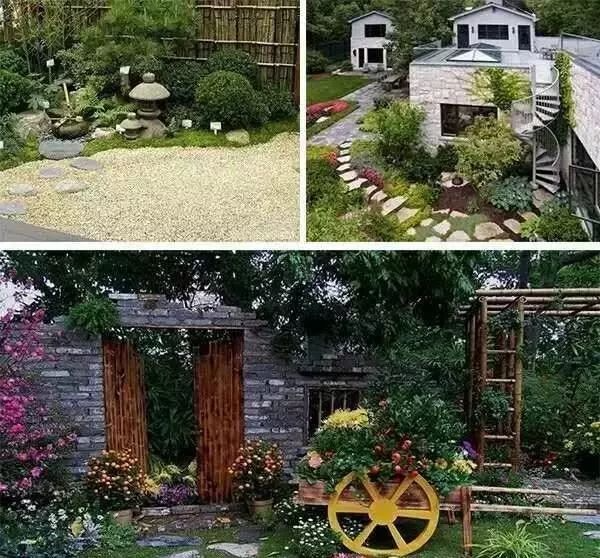
1. Plants suitable for outdoor planting
According to the specific environment of your own family courtyard, different plants can be planted in different positions. Of course, the best conditions are like a rural courtyard, with a large area, open courtyard, good light and ventilation conditions...
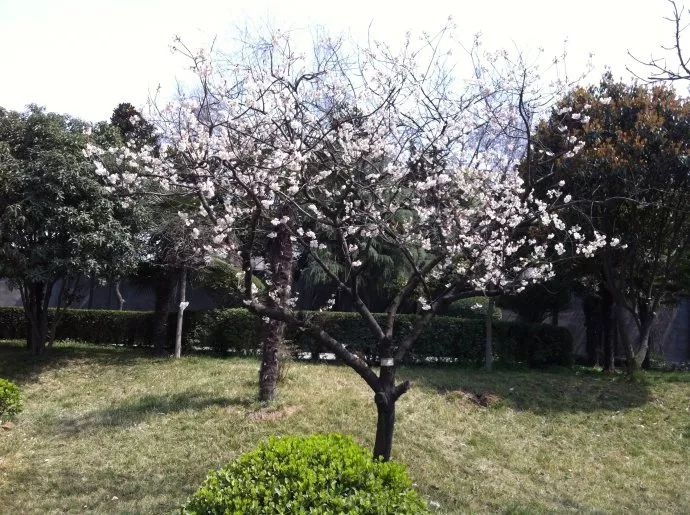
1. Light-loving ground-planted flowers and trees:
White magnolia, ginkgo, osmanthus, purple magnolia, Michelia, two-story magnolia, papaya, crabapple, weeping crabapple, crabapple, white magnolia, snowball, persimmon, hibiscus, magnolia, plum, rose, fig, camellia, crape myrtle, peony, pomegranate, wisteria, cherry, grape, peach, bamboo, red maple, redbud, hibiscus, Canary date palm, etc.
It is usually planted in a wide south-facing area for easy lighting, and a certain distance should be left from the house in front. If there is a building in front, the length should be no less than two-thirds of the height of the stairs.
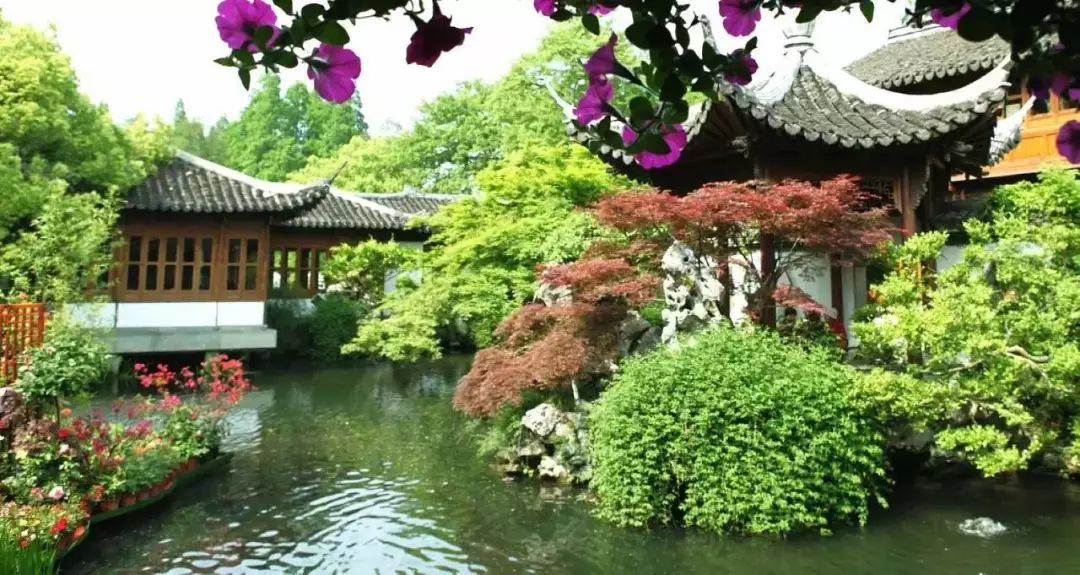
2. Shade-tolerant plants:
Such as palm, heather, peach coral, French holly, privet, broad-leaved magnolia, magnolia, camphor, cypress, Elaeocarpus, Podocarpus, Fatsia octocarpus, cypress, cedar, wintersweet, banana, and bamboo.
This type of plant is relatively tolerant of shade and humidity and can be placed closer to the front of the house, but it must be exposed to direct sunlight for at least two hours a day.
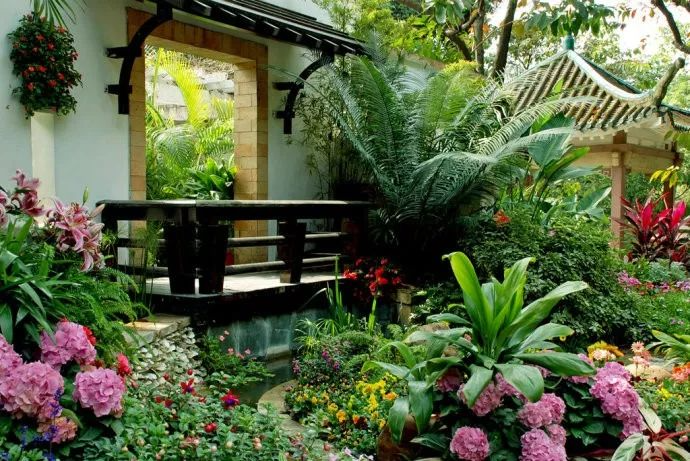
3. Herbs:
There are many kinds of grasses, flowers and ground cover plants suitable for ground planting.
Plants that love the sun and light include dianthus, snapdragon, kale, pansy, salvia, cockscomb, globe amaranth, backgammon, marigold, hollyhock, impatiens, lupine, daisy, marigold, poppy, onion orchid, dahlia, etc.
The more shade-tolerant grasses, flowers and ground cover plants include: Ophiopogon japonicus, Ophiopogon japonicus, Lucky grass, Hosta, Purple calyx, Lycoris radiata, Dieffenbachia glabra, Dieffenbachia glabra, Asplenium, Iris, Acorus calamus, Saxifrage, etc.
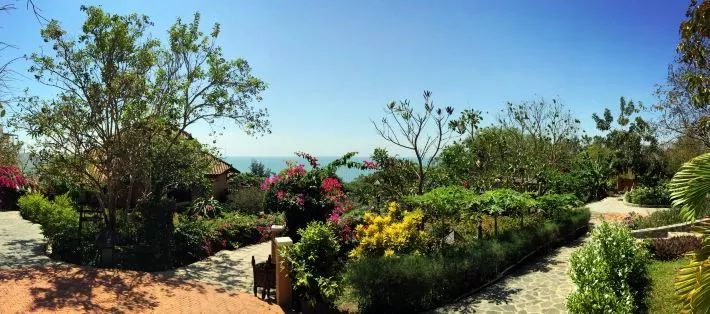
2. Precautions for planting outdoor flowers and trees
1. The soil in the field must be improved . Do not use the original bare soil directly. When selecting flowers and trees, understand the growth habits of the flower and tree varieties, and then prepare soil suitable for the growth of this type of flowers and trees.
2. Consider whether flowers and trees can safely survive the winter. The climate in the south and north is different, especially in the north, where winter temperatures generally drop below zero degrees Celsius. Therefore, when choosing flowers and trees, consider the local temperature and whether the species is suitable. If the plant is not cold-resistant, it is best to cultivate it in a pot.
3. When choosing flowers and trees , be careful not to choose those that easily breed mosquitoes and insects. You should choose flowers and trees that have fewer diseases and pests, longer flowering and fruiting periods, a fragrant smell, and auspicious names.
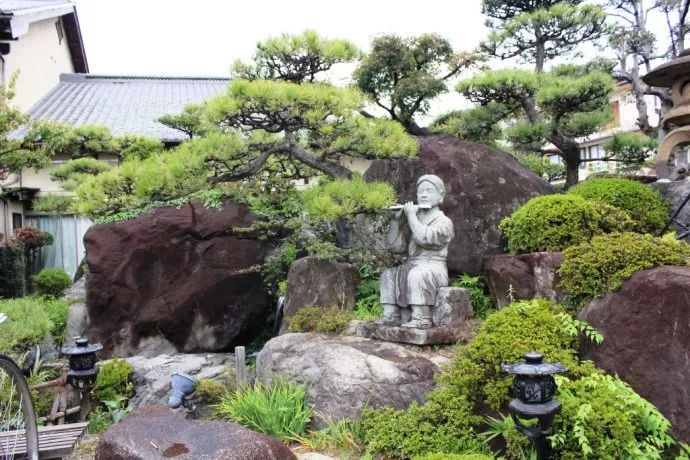
4. The number of flowers and trees should not be too many . They should be arranged reasonably according to the area of the courtyard and the variety of flowers and trees. Since the courtyard is a place for viewing and resting, not a nursery greenhouse or a field, it should be reasonably laid out. Generally speaking, there should be no more thanthreelarge trees. If there are shrubs or small trees, they should be appropriately decorated. They should be staggered according to the viewing needs of the courtyard. They should not be arranged in a straight line like in the fields. A larger space should be left to show the comfort and ease of the courtyard, rather than a primeval forest where it is impossible to walk.
3. Management and maintenance of outdoor flowers and trees
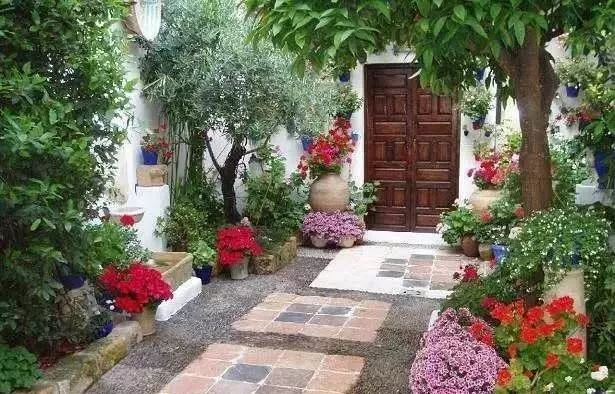
When applying fertilizer, it is necessary to apply fertilizer reasonably according to different varieties and different growth characteristics.
When applying fertilizer, it is usually buried in the soil layer 10-40cm deep to facilitate the fertilizer to seep into the ground and reduce the loss of fertilizer.
Generally, fertilization is done about twice a year, and the amount of fertilizer applied to flowering shrubs can be increased appropriately.
Plants of different varieties and sizes require different amounts of water, and your plants also require different amounts of water in different seasons.
Watering should be based on specific circumstances, and the amount of water should be maintained at an appropriate level under changing climatic conditions.
For example, in summer, the temperature is high and water evaporates quickly, so you should increase the amount of watering; in autumn, the sunlight intensity decreases, so you can reduce the amount of watering, and you can choose not to water in rainy weather.
Plant pruning is the process of removing some of the plants' overgrown and useless branches to ensure the growth of the remaining simple trees.
But it should be noted that when pruning, you should pay attention to pruning from the inside to the outside, from the bottom to the top, and prune in the order of large branches, small branches, and finally medium branches. The cut or sawn edge should be close to the mother branch and cannot be left on the branch to facilitate wound healing.
The purpose of loosening the soil is to loosen the soil surface, increase the permeability of the soil, and achieve the effects of ventilation, warming and moisturizing.
The purpose of weeding is to completely remove the weeds in the green space, keep the green space clean, reduce the competition of weeds for nutrients with trees and flowers, and promote the growth of flowers, plants and trees; at the same time, it can also remove the hiding places of pests and diseases, and reduce the chance of plants being harmed by pests and diseases.
Spring is a high-incidence season for pests and diseases, so we must focus on preventing and controlling pests and diseases in spring;
In summer, the main focus is on preventing and controlling pests that damage the leaves; in autumn and winter, attention should be paid to killing overwintering eggs and adults.
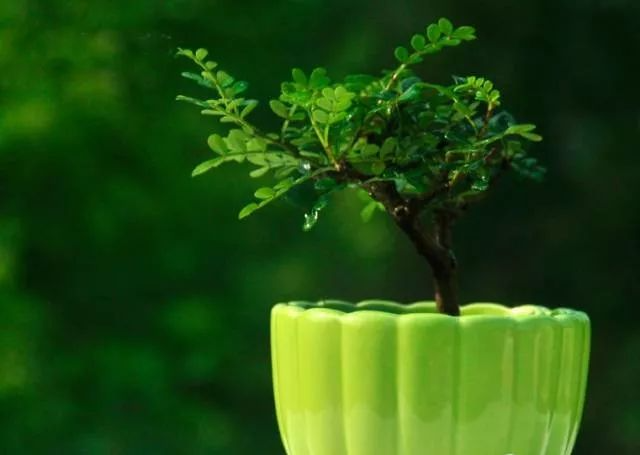
1. Plants suitable for indoor placement
▲ 1. Dripping Guanyin: It has the effect of clearing away dust from the air.
▲ 2. African Jasmine: The volatile oils it produces have significant antibacterial properties.They can also help you relax, promote sleep, and improve work efficiency.
▲ 3. Smilax glabra: It inhibits the exhalation of waste gases such as ammonia and acetone.Its high evaporation rate can prevent the nasal mucosa from drying out, greatly reducing the possibility of illness.
▲ 4. Silver Queen: Known for its unique air purification ability,the higher the concentration of pollutants in the air, the more it can perform its purification ability! Therefore, it is very suitable for dark rooms with poor ventilation.
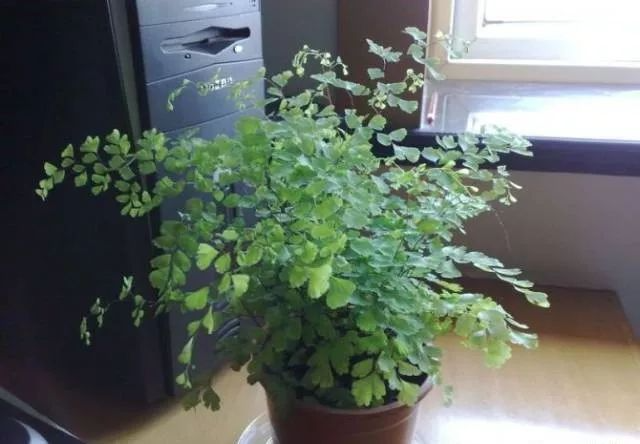
▲ 5. Maidenhair fern: It can absorb about 20 micrograms of formaldehyde per hour and is considered to be the most effective biological "purifier". It can also inhibit the release of xylene and toluene from computer monitors and printers.
▲ 6. Schefflera: Brings fresh air to smoking households. Its leaves can absorb nicotine and other harmful substances.
▲ 7. Chlorophytum: It can absorb 95% of carbon monoxide and 85% of formaldehyde in the air. Chlorophytum can carry out photosynthesis under weak light and absorb toxic and harmful gases in the air. It is known as a green purifier for indoor air.
▲ 8. Aloe vera: A pot of aloe vera is equivalent to nine biological air purifiers. It can eliminate 90% of formaldehyde in the air, kill harmful microorganisms in the air, and absorb dust, which plays a great role in purifying the living environment.
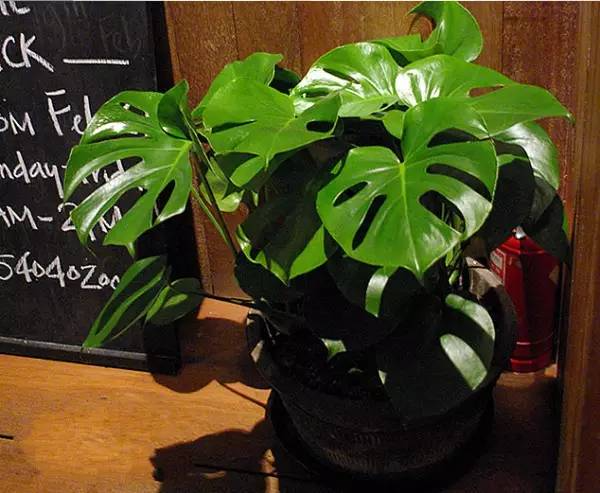
▲ 9. Monstera: It absorbs carbon dioxide at night, improving air quality andincreasing oxygen levels. Monstera is generally large, elegantly shaped, and has sparse, beautiful leaves, making it an ideal indoor plant.
▲ 10. Ivy: The best at absorbing formaldehyde.Ivy can also absorb toxic and harmful substances such as benzene.
▲ 11. Rubber tree: A versatile plant that can eliminate harmful substances. In addition tohaving a certain resistance to harmful gases, it can also eliminate inhalable particulate matter pollution and effectively trap indoor dust.
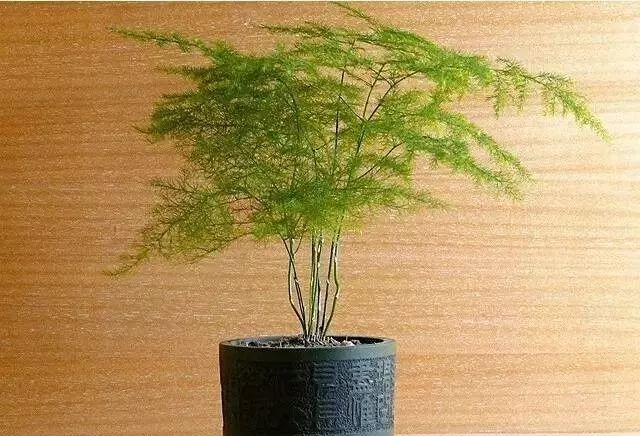
▲ 12. Asparagus fern: a protective umbrella that eliminates bacteria and viruses.The plant fragrance it contains has antibacterial ingredients., and has high medicinal value.
▲ 13. Bamboo palm: It eliminates heavy metal pollution and carbon dioxide. Its function is similar to that of Monstera deliciosa,and it can also eliminate heavy metal pollution.
▲ 14. Lucky bamboo: A healthy plant suitable for the bedroom.It can help improve the air quality in rooms that are not often ventilatedand has a disinfecting function.
▲ 15. Money tree: It fights against the waste gas produced by tobacco burning andremains green all year round.
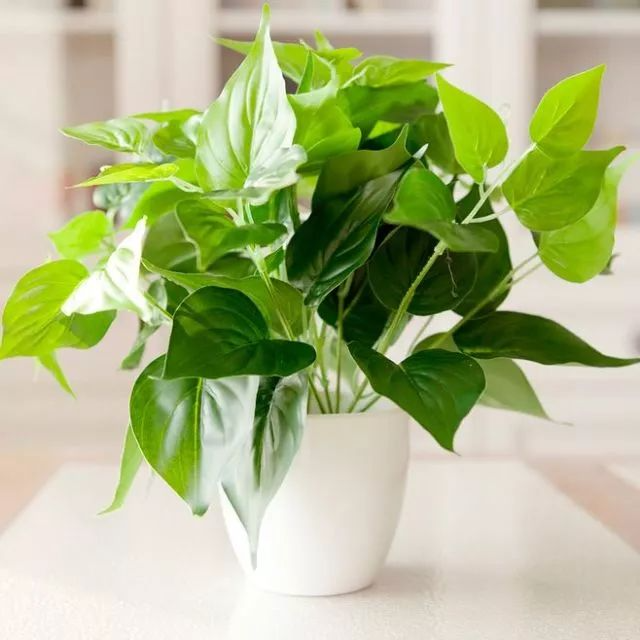
▲ 16. Green ivy: Improves air quality and eliminates harmful substances.It has strong vitality and a strong ability to absorb harmful substances.
▲ 17. Cactus: The best plant for reducing electromagnetic radiation.It has strong anti-inflammatory and antibacterial effectsandis the best plant for reducing electromagnetic radiation. Placing a cactus in the room at night is good for sleep.
▲ 18. Clivia: A freshener that releases oxygen and absorbs smoke. It does not emit carbon dioxide at night.
▲Other niche potted plants : calla lily, camellia, azalea, hibiscus, crape myrtle, Milan, osmanthus, plum blossom, peach blossom.
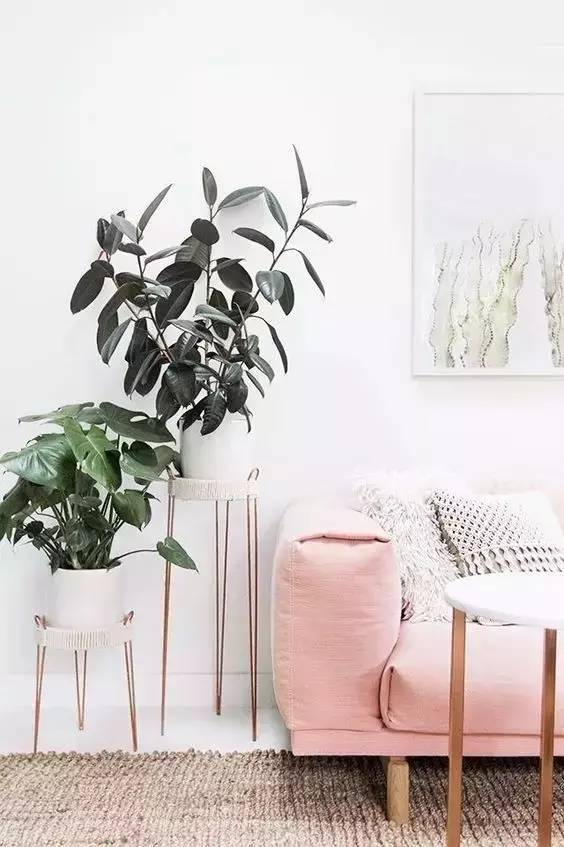
2. Indoor plant maintenance and precautions
How should we choose green plants and how should we place them to better combine the functions of appreciation, practicality and Feng Shui?
1. Considering the season, visual appeal, practicality, and personal preference,
people can choose home plants based on their edible, medicinal, and ornamental qualities. Most people prioritize their ornamental value. For newly renovated homes, place more plants that can absorb toxins.
2. There are some tips for placing plants when there are elderly and children at home.
The composition of the family determines the choice and placement of plants. For example, avoid placing large-leaved plants in a senior's room, as they evaporate a lot of water, releasing it into the air and harming those with rheumatism. Also avoid hydroponics in senior rooms. Households with children should avoid thorny plants. Furthermore, pollen-producing plants are also taboo in children's rooms.
3. Match with the decoration style of your home.
Green plants mainly serve as embellishments. Their placement is closely related to the decoration style. Green plants should be matched with the selected European, Chinese or simple decoration styles and furniture.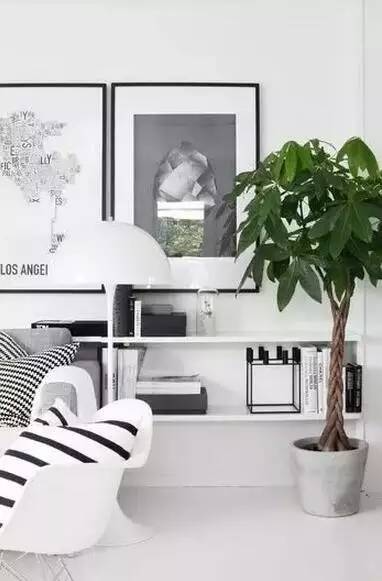
4. Integrate with the functions and feng shui factors of different areas
. Considering the area, it's not recommended to place too many plants in the bedroom, especially foliage plants, as they compete for oxygen at night. Kitchens are not suitable for plants due to the heavy smoke. If plants are allowed, choose hydroponic plants to create a pure and clean feeling. Living rooms, with ample sunlight and good ventilation, have fewer restrictions. Balconies have even fewer restrictions, but the main considerations are plant toxicity, safety, and feng shui.
Plants belong to the "wood" element in the Five Elements. Wood generates fire, fire generates metal, and metal represents wealth. This is why green plants are considered "wealth-attracting" in feng shui, with lush vegetation representing strong financial fortune. Different plants are placed for the wealth and evil positions in the home. Generally, plants with lush foliage and long-lasting flowering blooms, such as anthuriums and lucky charms, are chosen for the wealth position. These plants are dense, long-lasting, vibrantly colored, and durable. Placing plants in the Sha position is intended to dispel negative energy. Thorny, unyielding plants, such as cacti, roses, and bougainvilleas, are typically chosen to ward off negative energy.
5. Watering Tip: Don't water unless the soil is dry, and water thoroughly
when you do. Simply remember these eight words when watering. How are "not dry" and "water thoroughly" defined? "Don't water unless the soil is dry" means watering when the soil appears dry or even slightly pale, while "water thoroughly" means water leaking from the potting saucer. Watering halfway through can actually cause the plant to die. However, avoid excessive water leaking from the saucer during watering, as this removes nutrients from the soil. If water accumulates in the upper soil halfway through, air flow is blocked, while the lower soil cannot absorb water, suffocating the plant.
Furthermore, watering times differ between winter and summer: water in the evening in winter and in the morning in summer. With these two simple, easy-to-remember tips, you can keep your plants nourished.
How different plants are in their light and water needs.
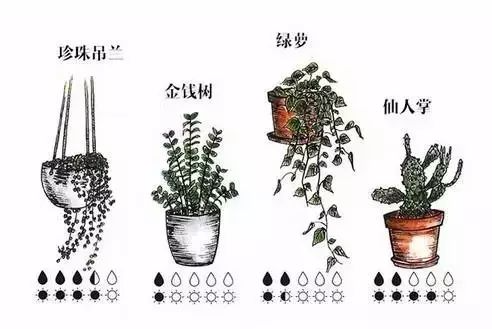
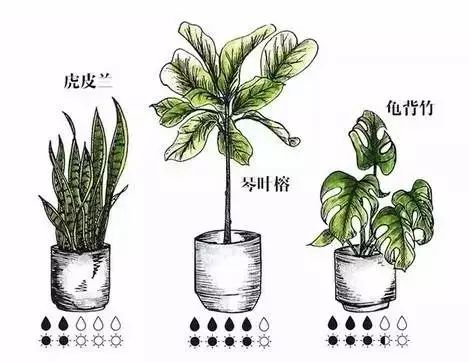
6. Do not apply too much or too little fertilizer
Generally, indoor potted plants should be fertilized with a thin fertilizer at the end of spring and every other week in summer and autumn. Avoid using concentrated fertilizers. If you overfertilize, water more frequently to dilute and wash away some of the fertilizer in the soil.
Fertilizer deficiency can cause the soil in the pot to become compacted, and the leaves of potted plants will turn yellow, and the branches will be slender and tender. Fertilization should be applied immediately at this time, and the effect will be seen within a week.
7. The amount of light should
be determined based on the growth characteristics of the potted plant. The amount of light should be neither too much nor too little. Sun-loving potted plants, such as pomegranates, azaleas, and roses, can weaken over time if placed in low light conditions. Their leaves become thin and yellow, and they bloom only sparingly or infrequently. Similarly, shade-loving plants, such as hostas, asparagus ferns, and dieffenbachia, should also avoid excessive exposure to the sun, as this can cause their leaves to wilt, turn yellow, or even die.
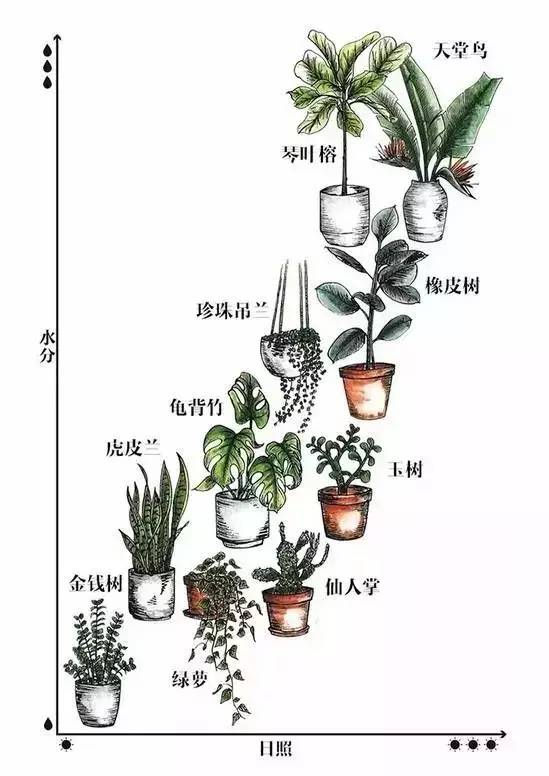
8. Prevention and control of potted plant diseases and pests
Common pests and diseases of indoor potted plants include aphids, spider mites, and leaf spot caused by fungal and viral infections. These diseases can be detrimental, causing localized necrosis or wilting of leaves, or even complete chlorosis of the entire plant. Therefore, indoor potted plants require careful attention to watering, fertilizing, and light management. Maintain good ventilation and apply preventative sprays.
A garden brings peace of mind